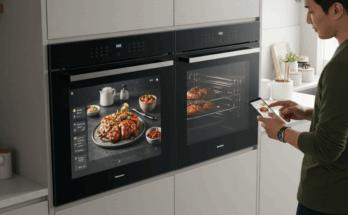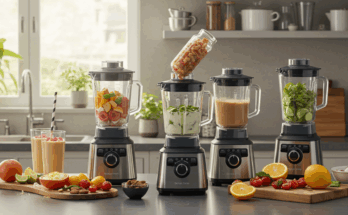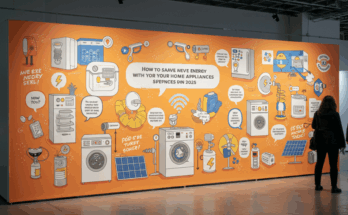Buying a refrigerator isn’t just about picking the shiniest one on the showroom floor. It’s about finding the right fit for your family’s lifestyle, budget, and kitchen space. I remember when my sister Jenna spent weeks agonizing over her fridge choice—only to end up with a sleek model that couldn’t hold her weekly grocery haul. Don’t let that happen to you! Let’s walk through the process of choosing the perfect refrigerator step-by-step, with some storytelling, expert tips, and a sprinkle of research to guide us.
Why the Right Refrigerator Matters
Your fridge is the unsung hero of your home. It keeps your food fresh, drinks cold, and leftovers safe. According to the U.S. Department of Energy, refrigerators account for about 7% of a household’s energy use—so picking an efficient one can save you money too. But beyond the numbers, it’s about convenience. A cramped fridge can turn meal prep into a game of Tetris, while a poorly designed one might leave your veggies wilting faster than you can say “salad.”
So, how do you find the one that’s just right? Let’s dive in.
Step 1: Assess Your Family’s Needs
How Much Space Do You Need?
Start with the basics: how many people are in your household? A single person or couple might do fine with a 10-15 cubic foot fridge, while a family of four or more might need 20 cubic feet or higher. My friend Mark, a dad of three, swears by his 25-cubic-foot fridge. “With two teens and a toddler, we’re always stocked up on milk, snacks, and frozen pizzas,” he says. Think about your habits—do you cook fresh meals daily, or are you a bulk-shopping, freezer-stocking pro?
What’s Your Food Storage Style?
Are you a meal prepper who needs extra shelves for containers? Or maybe you’re the type who loves a cold soda within arm’s reach? Features like adjustable shelves, door bins, and crisper drawers matter here. My sister Jenna didn’t realize how much she’d miss a dedicated deli drawer until her new fridge didn’t have one. Take stock of what you store most—fruits, veggies, beverages, or leftovers—and prioritize accordingly.
Step 2: Pick the Right Style
Refrigerators come in all shapes and sizes, and each style has perks. Here’s a quick rundown:
Top-Freezer Models: Classic and Budget-Friendly
You probably grew up with these ones—freezer on top, fridge below. They’re affordable (often $500-$1,000) and energy-efficient. They’re perfect for smaller families or tight budgets, but the freezer can be a stretch to reach if you’re short, like me!
Bottom-Freezer Models: Easy Access
Flip the script—fridge on top, freezer below. These are great if you use your fridge more than your freezer, though bending down for ice cream might get old. Expect to pay $1,000-$1,500.
Side-by-Side: Space and Style
The fridge and freezer split vertically offer wide shelves and plenty of door storage. They’re ideal for families who freeze a lot but can be pricey ($1,200-$2,000). Mark loves his side-by-side for its dual ice and water dispenser—his kids can’t get enough of it.
French Door: The Luxury Pick
Think of a wide fridge on top with double doors and a freezer drawer below. These are spacious, stylish, and packed with features ($2,000-$3,000+). My neighbor Lisa raves about hers: “I can see everything—no more lost jars in the back!”
Step 3: Measure Your Space (Twice!)
This is where Jenna’s fridge saga went wrong. She fell in love with a French door model, realizing it wouldn’t fit through her kitchen doorway. Measure your space—height, width, and depth—and account for door clearance. Standard fridges are 30-36 inches wide, but counter-depth models (around 24-30 inches deep) blend seamlessly with cabinets. Pro tip: Leave an inch or two around the sides and top for ventilation, says appliance expert Sarah Johnson from Consumer Reports.
Step 4: Focus on Features That Fit
Modern fridges are like mini spaceships—loaded with bells and whistles. But do you need them all? Here’s what to consider:
Energy Efficiency
Look for the Energy Star label. According to the EPA, these models use 10-50% less energy than standard ones, saving you $50-$100 a year. It’s good for your wallet and the planet!
Temperature Control
Dual-cooling systems (separate for fridge and freezer) keep food fresher longer. “It’s a game-changer for produce,” says chef and food scientist Maria Lopez. No more soggy lettuce!
Smart Features
Wi-Fi-enabled fridges can alert you when the door’s ajar or even show you what’s inside via an app. Cool? Yes. Necessary? Maybe not—unless you’re a tech geek like my cousin Dave.
Ice and Water Dispensers
They are a hit with kids and guests but can be expensive and require maintenance. Opt for in-door dispensers to save freezer space.
Step 5: Set a Budget
Refrigerators range from $500 to $5,000+. Set a cap based on your needs, not your neighbor’s fancy fridge. “Spend on what you’ll use,” advises Johnson. “A $1,500 model with smart shelving beats a $3,000 one with features you’ll ignore.” Shop sales—Black Friday and Memorial Day are goldmines for deals.
Step 6: Check Reliability and Reviews
Not all brands are created equal. Consumer Reports ranks LG, Samsung, and Whirlpool high for reliability, while RepairClinic data shows fewer service calls for these names. Read user reviews, too—real families spill the tea on what works (or doesn’t). Jenna wishes she’d checked reviews—her fridge’s ice maker died within a year.
Real-Life Example: The Perfect Pick
Take my coworker Tom. With a family of five and a love for hosting, he needed a workhorse. He measured his nook (35 inches wide), set a $2,000 budget, and landed on a French door LG with dual ice makers. Two years in, he’s still grinning: “It fits our chaos perfectly.” Your perfect pick is out there, too—it just takes some homework.
Bonus Tips for Longevity
-
- Clean the coils yearly—dusty coils make the fridge work harder, says Lopez.
-
- Keep it full—a stocked fridge retains cold better, but don’t overstuff it.
-
- Set it right—38°F for the fridge, 0°F for the freezer, per FDA guidelines.
Your Refrigerator Questions Answered
What size refrigerator is best for a family of 4?
A 20-25 cubic foot model usually works, balancing space and efficiency.
Are stainless steel fridges worth it?
They look great and resist fingerprints (if smudge-proof), but cheaper finishes like black or white work just as well.
How long should a refrigerator last?
About 10-15 years with proper care, per industry stats.
Do smart fridges save money?
Not directly—they’re more about convenience. Energy Star models save more in the long run.
Choosing the perfect refrigerator doesn’t have to be a chore. Consider your family’s quirks, measure your space, and weigh the most important features. Whether a budget-top freezer or a tricked-out French door, the right fridge will keep your food and sanity intact. So, what’s your fridge story? Let’s find the one that fits yours.




